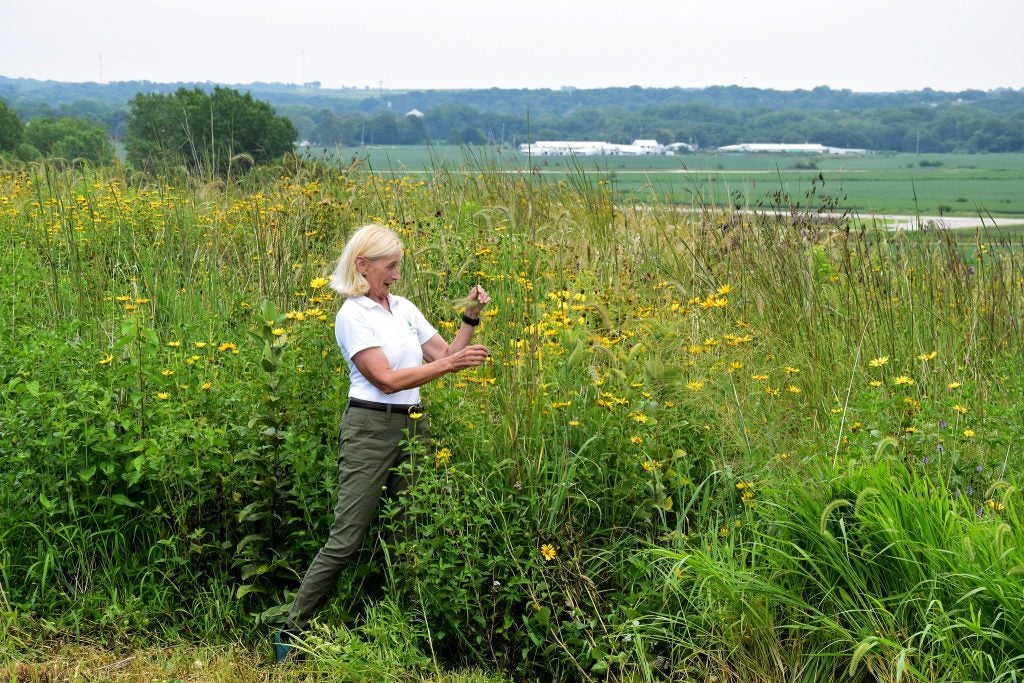Agricultural and environmental advocates have joined forces to push Congress to act on climate change. The new Food and Agriculture Climate Alliance developed more than 40 joint policy recommendations for making farms, ranches and forests more climate resilient, harnessing the power of natural climate solutions.
Environmental Defense Fund, American Farm Bureau Federation, National Council of Farmer Cooperatives and National Farmers Union co-chair the alliance, and membership has expanded to include FMI-The Food Industry Association, National Alliance of Forest Owners, National Association of State Departments of Agriculture and The Nature Conservancy.
That these groups found common ground shows both the urgency of addressing climate change and that doing so is now politically possible.
The alliance’s policy recommendations outline ways that Congress can drive climate-smart practices in the areas of soil health, livestock and dairy, forestry and wood products, energy, research and food waste. Because climate policies will affect natural resources, producers, rural communities and communities with limited resources, they must be carefully crafted to account for inequities, consequences and tradeoffs.
Here are three areas where Congress should focus.

America’s farmers, ranchers and forest landowners are on the frontlines of the climate change. Planting windows and growing seasons are shifting, and droughts and floods are more likely to occur. At the same time, these working lands hold enormous potential to help slow climate change and increase resilience to its effects. Photo credit: Iowa NRCS.
1. Create incentives and market-based opportunities.
Federal policy can and should create voluntary, incentive-based programs and market-driven opportunities for the agriculture sector to maximize carbon sequestration and greenhouse gas reductions and to increase the resilience of the land.
One particularly impactful option would be establishing a carbon bank administered by the U.S. Department of Agriculture. The bank would establish a price floor for verified carbon sequestration and greenhouse gas reductions, which would give farmers, ranchers and forest landowners the economic certainty they need to make investments in climate-smart practices.
If passed into law, the Growing Climate Solutions Act, also supported by the alliance, could provide the legislative basis for the carbon bank as it would enable voluntary environmental marketplaces that are backed by USDA guidelines for verifiable emission reductions.
2. Increase resilience in rural communities.
Federal climate policy must also promote resilience and adaptation in rural communities.
Providing dedicated farm bill funding for a new conservation technical assistance initiative focused on soil health and resilience would increase climate adaptation and create job opportunities. This funding could be used to recruit and train the technical assistance providers needed to help producers overcome barriers to adoption of practices that boost climate resilience.
USDA should also make it easier for certified crop advisers to become technical service providers. On-the-ground support from trusted partners will be critical for quickly scaling use of climate-smart practices. Policymakers have a window of opportunity to reward agriculture for being part of the climate solution. Here's how. Share on X
3. Ground everything in science.
Federal climate policies must be guided by science and work toward measurable outcomes. It’s essential to know that we’re making real progress tackling climate challenges.
The alliance calls for substantial and continuous increases in funding for agriculture, forestry and food-related research. This will help ensure farmers, ranchers and forest landowners have access to the scientifically rigorous tools and information they need to build climate resilience, mitigate environmental impacts and increase the productivity of their land.
USDA’s Climate Hubs are an invaluable resource providing regionally tailored information to farmers and researchers. These hubs should be expanded so that they can regularly engage stakeholders and prioritize vital research.
More resilient farms and forests protect the agricultural economy, reduce climate risk and prevent worsening climate impacts in the future. Now, policymakers have a window of opportunity to reward agriculture for being part of the climate solution.









